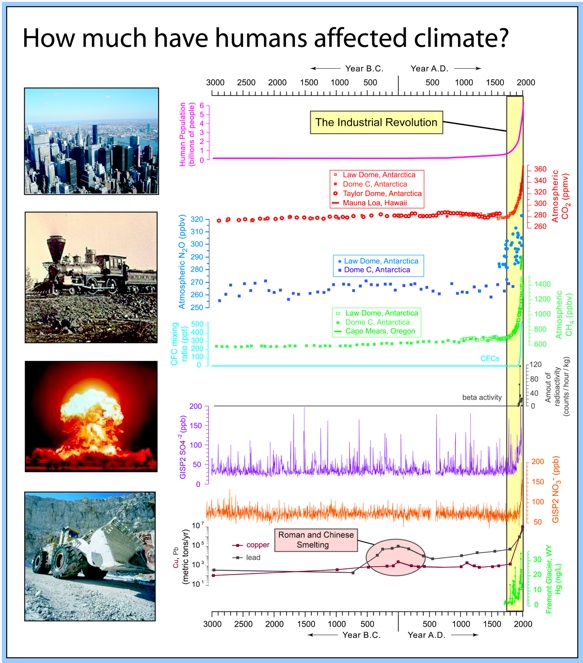Ice Core: Human Impacts








The rise of the Industrial Revolution at the end of 18th century led to major advances in agriculture, manufacturing, and transportation as well as an immense growth in the world’s population and resource consumption (i.e. mining activities and the burning of coal, oil, and natural gas). As a result, the Industrial Revolution marks the period during which humans began to substantially alter the composition of the atmosphere. The impact of increased fossil fuel burning and other practices that release pollutants into the atmosphere rapidly accelerated during the 20th century as clearly reflected in paleoclimate records (i.e. ice cores) and atmospheric observations by large rises in atmospheric concentrations of carbon dioxide (CO2), methane (CH4), nitrous oxide (N2O), nitrate (NO3-), sulfate (SO42-), chlorofluorocarbons (CFCs), radioactivity (beta activity), and metals such as mercury(Hg), copper (Cu), and lead (Pb).



